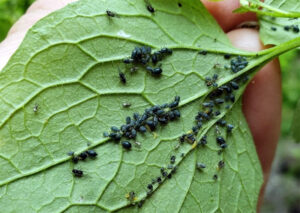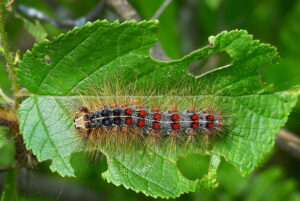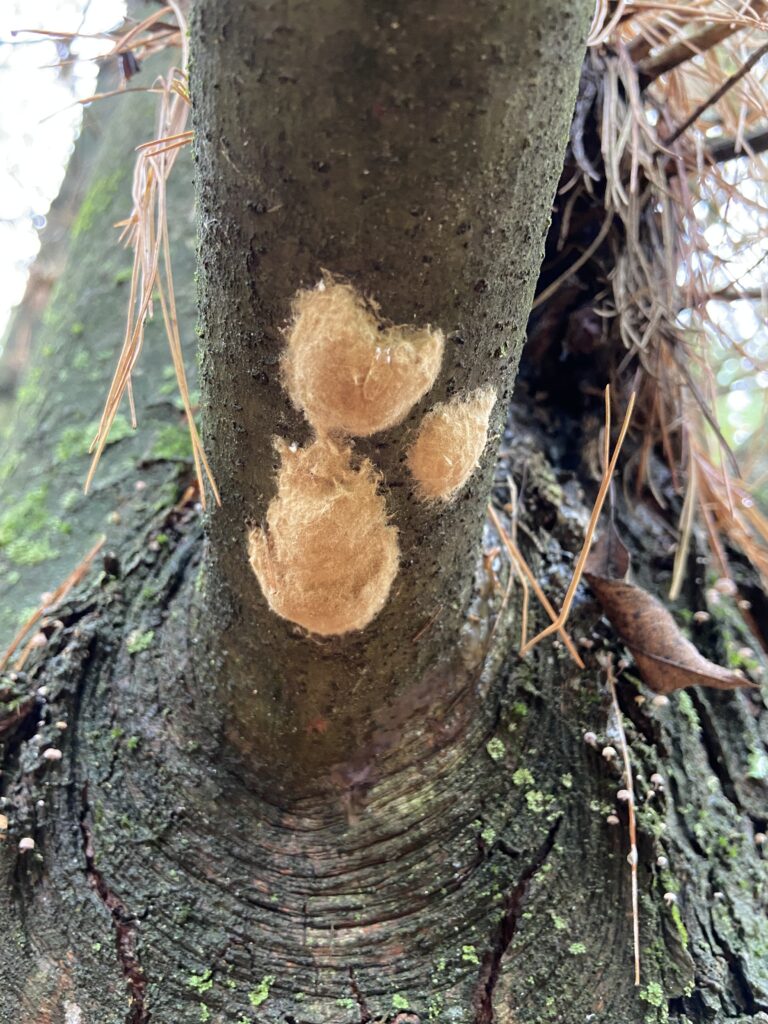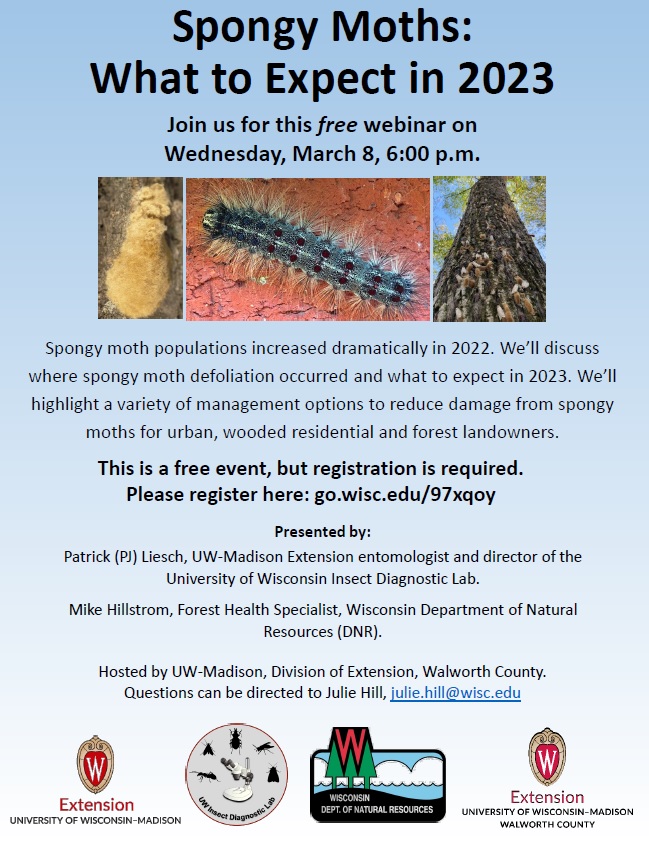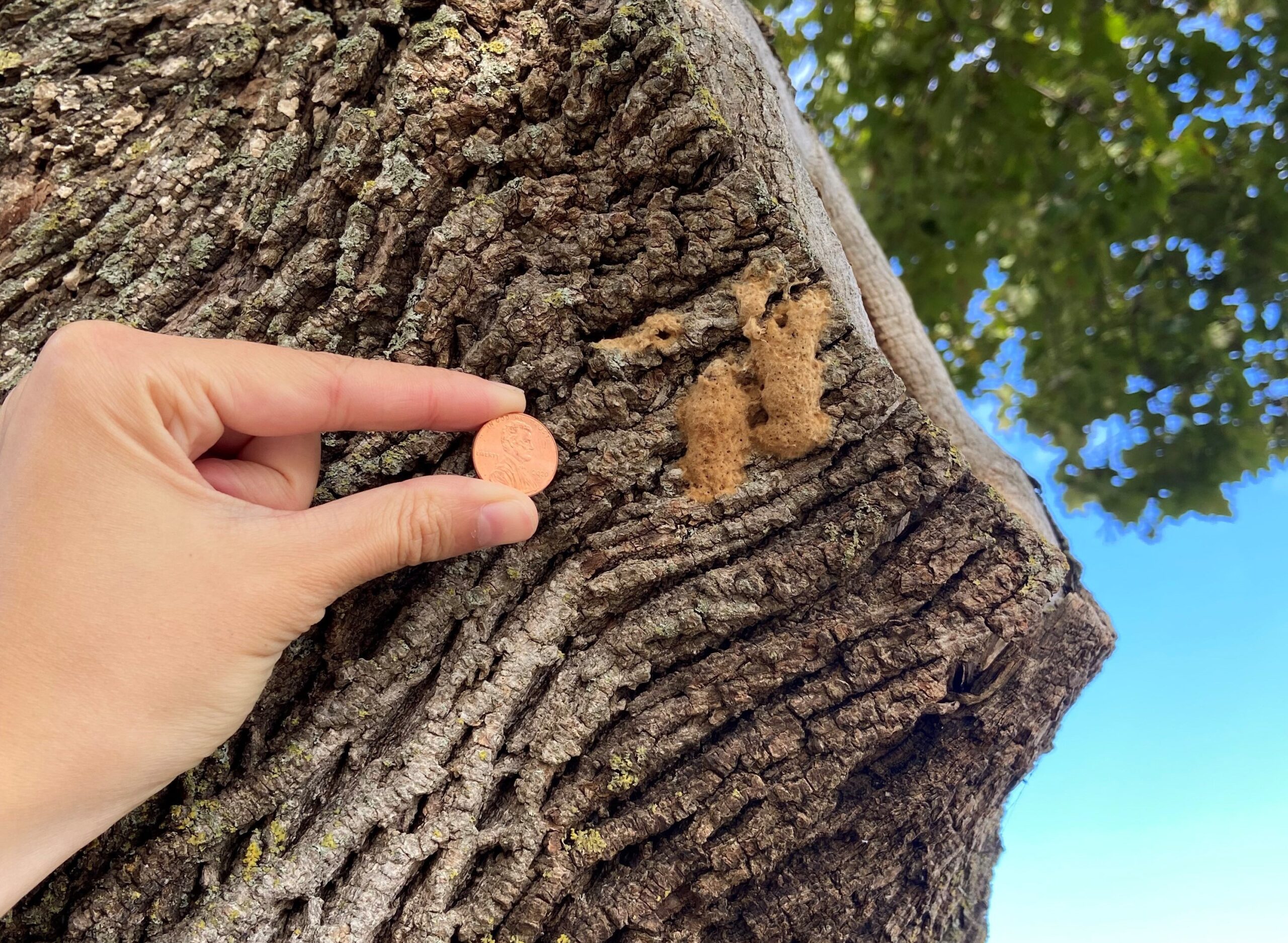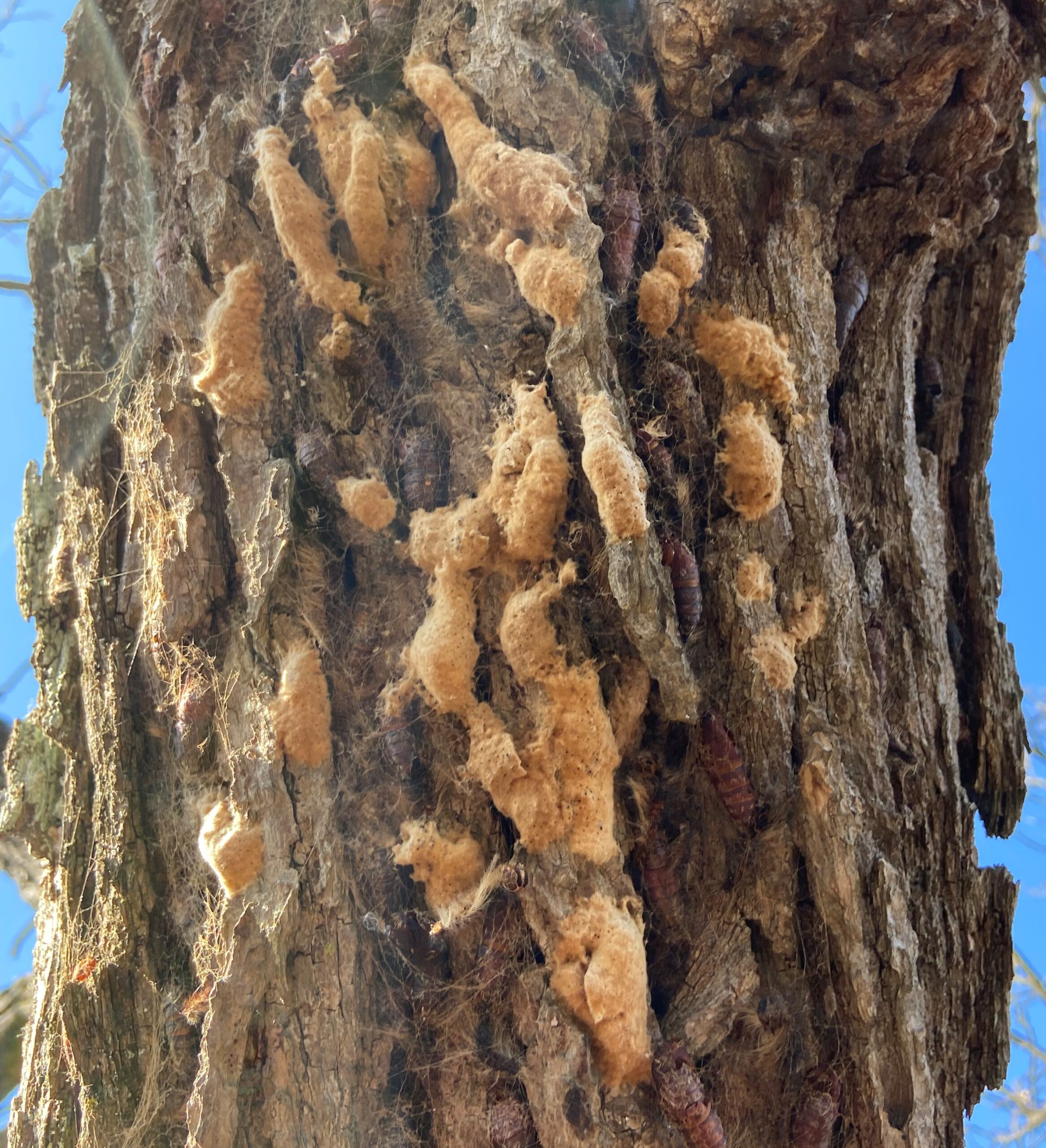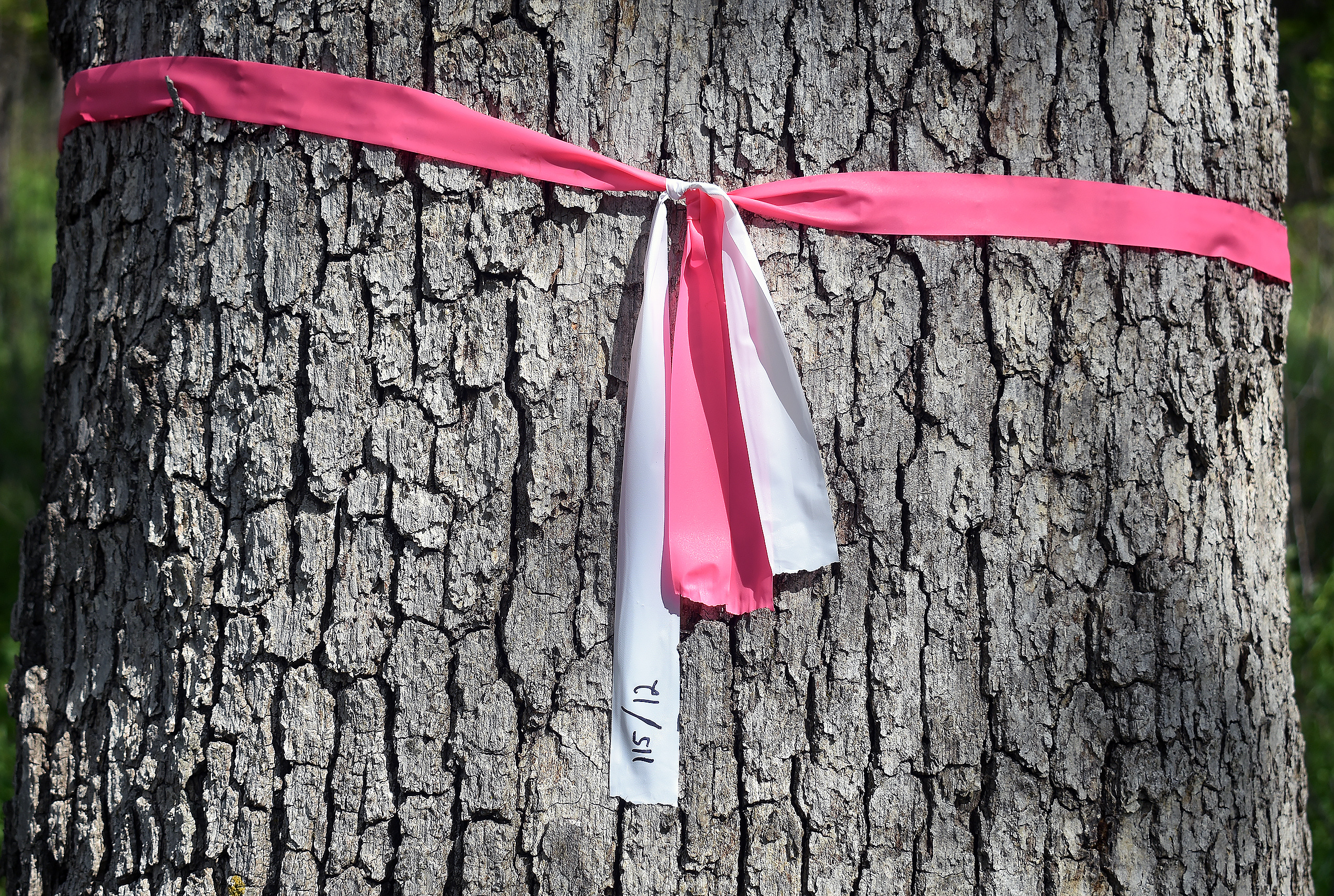

Cory McCurry, an arborologist with Rainbow Ecoscience, talks with DNR Parks and Forest Health employees while demonstrating the use of a nozzle component of the Q-Connect tree injection system currently in use at state properties. Photo: Wisconsin DNR.
Art Kabelowsky, DNR Forest Health outreach and communications specialist
Arthur.Kabelowsky@wisconsin.gov or 608-335-0167
LAKE GENEVA, Wisconsin — Fifteen employees of the Wisconsin Department of Natural Resources gathered at Big Foot Beach State Park on May 16 to learn more about using injections of systemic pesticides to protect the health of high-value trees at state properties.
Ten Wisconsin State Parks employees and five members of the DNR’s Forest Health team met with representatives of Rainbow Ecoscience and Bartlett Tree Experts to witness a demonstration of best practices for tree injections.

